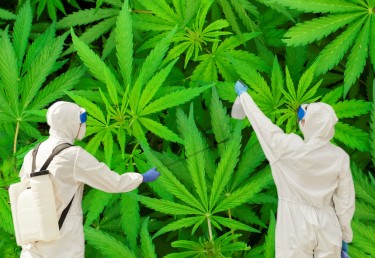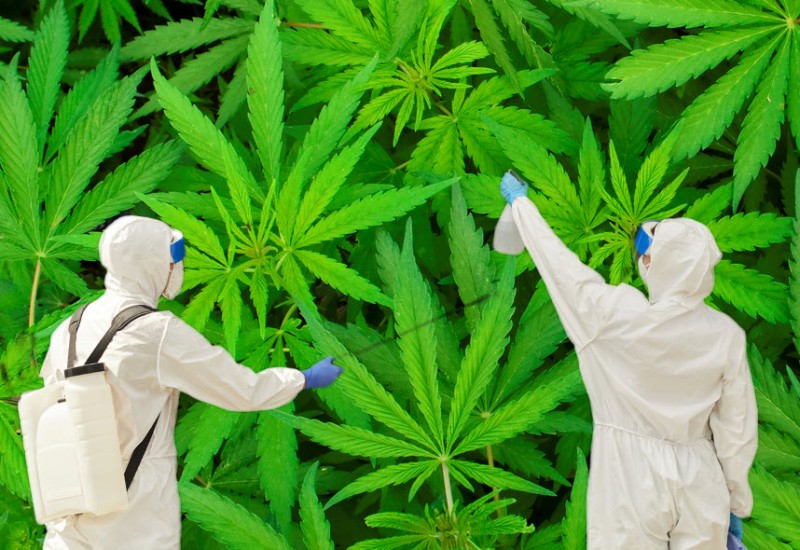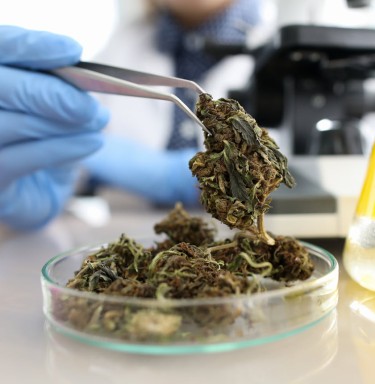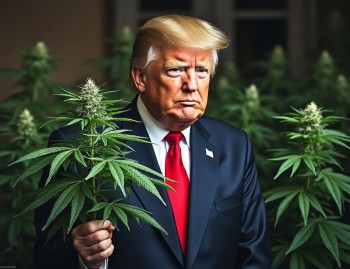
You may remember an article posted on Cannabis.net called, "Legal Cannabis is More Expensive But It is Lab-Tested and Safe, NOT!", where Colorado has seen a large amount of attempted cheating and work-arounds for cannabis samples to get approved as safe from their cannabis testing lab reports. The premise highlights how everyone, including legal weed growers that have to have products tested, are trying to juice their already thin profits by using pesticides and other banned substances to ehance grow results.
Is the illicit market doing the same?
A recent study published in the Journal of Cannabis Research has unveiled alarming evidence regarding the presence of pesticides in Canadian cannabis, drawing a stark contrast between the illegal and legal markets, or is there such a start contrast after all? Legal cannabis has much thinner margins due to the heavy burden of regulation and taxation, so using chemicals to enhance yield and create more profit is always a temptation. If you can get around lab results and testing, the temptation may be just too great not to do it.
In a study titled "Comparing Pesticide Levels in Illicit and Licensed Canadian Cannabis Samples Using an Extensive 327-Pesticide Multiresidue Method," researchers analyzed 36 cannabis samples procured from licensed dispensaries and 24 samples confiscated from illegal operations, subsequently submitted to Health Canada for laboratory testing in 2021.
The researchers subjected these samples to comprehensive testing for 327 distinct pesticides, revealing a troubling revelation. It was found that a significant number of the illicit cannabis samples harbored harmful chemical residues. The research elucidated, "Pesticide residues were identified in a staggering 92% of illicit cannabis inflorescence samples from Canada, encompassing 23 distinct pesticide active ingredients." Notably, four particular pesticides and their synergists—myclobutanil, paclobutrazol, piperonyl butoxide, and pyrethrins—were detected at a remarkably high frequency, occurring eight to 17 times within the total of 24 illicit samples studied.
Furthermore, it was observed that a single illegal sample contained nine distinct pesticide ingredients. On average, the illicit samples contained 3.7 different pesticides, with a substantial 87% of them exhibiting the presence of multiple pesticides.
Pesticide Presence: A Stark Contrast Between Legal and Illegal Samples
The researchers presented a table detailing the presence of pesticides in both licensed and illicit samples. Interestingly, only a meager 6% of the licensed samples tested positive for pesticides, and these instances were limited to dichlobenil and myclobutanil. The positive test number appears much higher in the US, as the Colorado testing story points out.
The study's primary objective, as elucidated by the researchers, was to enhance and streamline their existing method for assessing pesticides in cannabis inflorescence. The process entailed homogenizing the cannabis flower in a laboratory blender, followed by its combination with the solvent acetonitrile. Subsequently, the mixture underwent extraction using a Geno-Grinder, followed by centrifugation and additional steps to yield an inflorescence sample housed within a vial, ready for testing. The study proudly unveiled this novel approach: "This study introduces an innovative, streamlined method for the comprehensive detection of 327 pesticides in cannabis inflorescence through gas chromatography—triple quadruple mass spectroscopy and liquid chromatography—triple quadruple mass spectroscopy."
It's noteworthy that studies of this nature are still relatively uncommon. The study concluded with the statement, "To the best of our knowledge, this research represents the sole extensive analysis of pesticide residues comparing the licensed and illicit cannabis markets in a nationwide jurisdiction where cannabis has been legalized. While our study sample size is modest, our findings reinforce the Government of Canada's advisory regarding the potential risks associated with consuming illegal cannabis products, including contaminants such as pesticides and elevated levels of bacteria, lead, and arsenic."
This study's findings underscore the marked disparity between the safety of legal cannabis products and the hazards associated with illicit cannabis, serving as a testament to the effectiveness of Canada's regulated cannabis industry.
In a related context, back in October 2019, a nonprofit organization known as Beyond Pesticides penned a letter to Congress, urging representatives to safeguard the public from the perils of pesticides in cannabis. Their message emphasized that pesticide use on marijuana was unlawful, given that marijuana lacked legal status as an agricultural crop under pertinent federal law (Federal Insecticide, Fungicide, and Rodenticide Act). Furthermore, they pointed out that the EPA had not assessed the safety of any pesticides for use on marijuana plants, and there were no established allowances, tolerances, or exemptions for pesticide residues on cannabis. In the absence of federal regulations governing pesticides in cannabis production, the use of unregistered pesticides was deemed illegal.
Advocating for Cannabis Safety: Beyond Pesticides' Precautionary Approach"
Beyond Pesticides has recently published an article addressing historical and contemporary pesticide concerns associated with cannabis. In this piece, they advocate for a precautionary approach to be adopted by states to safeguard consumers. The organization emphasizes the need for states to establish regulations promoting sustainable production practices, ensuring public health and environment protection. Beyond Pesticides strongly recommends a comprehensive, systems-level approach to cannabis production, requiring adherence to national organic standards.
In September 2019, a significant public health crisis unfolded when approximately 1,000 individuals fell ill, and 18 people tragically lost their lives due to a then-unknown vaping-related illness. Eventually, the Centers for Disease Control and Prevention (CDC) identified Vitamin E Acetate as the culprit responsible for this epidemic, known as EVALI (e-cigarette or vaping product-use-associated lung injury). While Vitamin E Acetate is generally considered safe for oral or topical use, inhaling it can lead to the coating of lung tissues and subsequent respiratory issues, among other concerns. This crisis raised substantial awareness about the ingredients used in inhaled products, both cannabis and non-cannabis related.
Cannabis products have also faced recalls in the past due to unsafe levels of mold. In November 2022, Colorado regulators issued a safety advisory regarding contaminated product batches. In January of the same year, the Nevada Cannabis Compliance Board issued a public safety announcement regarding the unapproved use of a pesticide called Ethephon on cannabis products. The affected items encompassed an estimated 117 edibles, 41 pre-rolls, and more than 200 concentrates, all of which were sold at 104 dispensaries.
Further, in February of this year, Vermont legislators initiated a recall of cannabis grown with Eagle 20, which reportedly caused adverse effects such as headaches and nausea in consumers.
As policies pertaining to pesticides continue to evolve, these instances underscore the paramount importance of educating the public about pesticides and other substances utilized in the cultivation and production of cannabis products. It is advisable to seek a certification of analysis from a reputable cannabis company or business to ensure that the product has undergone proper testing and meets safety standards.
Bottom Line
Everyone in the marijuana industry, both legal and illicit, is trying to improve margins and boost profits. One easy way to do it is to use presticides to increase plant yields and grow volume. Both the legal and illegal growers are testing the limits on what they can get away with and still sell a "safe" product. This study's unsettling revelations of pervasive pesticide contamination in illegal cannabis samples, starkly contrasting with the lower incidences in legal products, emphasize the critical importance of rigorous regulation and testing in the cannabis industry. Beyond Pesticides' call for a precautionary approach and stringent adherence to national organic standards underscores the need for comprehensive safeguards to protect consumers and the environment. Recent crises, such as the EVALI outbreak and recalls due to mold and unsafe pesticide use, further highlight the urgency of educating the public about cannabis product safety. As policy and safety measures continue to evolve, consumers are urged to seek certifications of analysis from reputable cannabis sources to ensure the products they use meet stringent safety standards.







